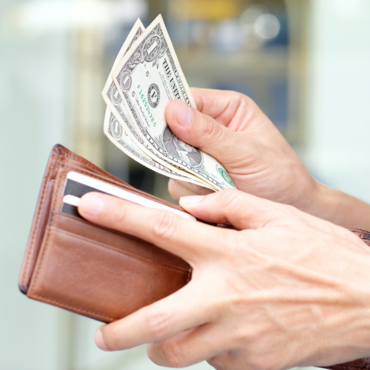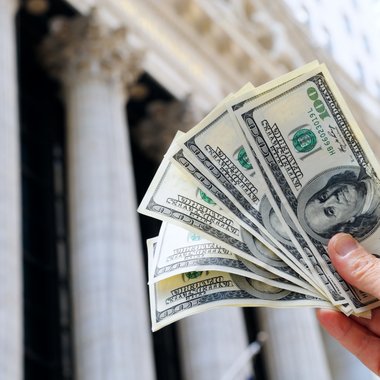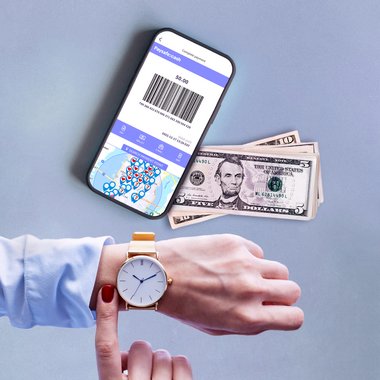Why cash payments are enduringly popular across the globe: a three-country case study
Nov 17, 2021Whether you're buying online or at your local convenience store, there are plenty of ways you can pay. But while customers have become accustomed to this plethora of payment choices — and most won’t complete a transaction[1] if their preferred method isn't available — it seems none of us are ready to give up cash for good.

This holds true regardless of how secure, convenient, or widely accepted cashless payments are. If anything, a recent study found that, in countries where cashless payments are commonplace, people are more likely to be opposed to going completely cashless.
So what's the secret to cash's enduring popularity in the face of growing competition from digital alternatives?
We've looked at customers' attitudes to payments in Peru, the U.S., and Germany to find out how cash fits into their local payments landscape.
Cash payments in Peru: closing the gap on financial inclusion
Cash payments continue to be the preferred payment method for many in Latin America, and stills accounts for more than half of all in-person transactions. Other financial products and fintech are gaining adoption, but for many cash is the only instrument at their disposal. Take Peru, for instance.
While financial inclusion is a growing priority in Peru, there is still some way to go. Only 44% of Peruvian adults had at least one financial product at the outbreak of COVID-19, of which the majority (42%) owned a saving account. Adoption of bank cards is even lower, with only 3% of consumer owning a credit card at the beginning of 2020.
And the shift to eCommerce is growing faster than adoption of financial services. One of the reasons for this, in addition to the global trend of digitalization accelerating due to the pandemic, is that smartphone adoption is outstripping financial inclusion. And that isn’t only with people who already have bank accounts, in fact across Latin America smartphone adoption has grown faster among those that do not currently have a credit card than those that do. Overall, only half of consumers that own a smartphone also own a credit card.
And its not only a lack of access to credit and debit cards that is impacting how consumers pay online. Often Peruvians prefer to use digital wallets or banking apps because they do not trust that their financial details will remain secure with card payments, they are simply more familiar with that type of payment method, or they have had a negative experience with card declines. And they want to top up their digital wallets without using card payments too, with direct bank transfers being one of the most popular methods as well as eCash.
In many cases a preference for cash isn’t hindering the growing of online payments, it is underpinning it. In Latin America many of the preferred online payment solutions are those that facilitate the spending of cash online.
Paying your way in the USA
According to our latest Lost in Transaction data, cards are Americans' favourite online payment method.
Similarly, 38% of point of sale payments in the U.S. are made with a credit card, with the second most popular method being a debit card. But if cards are widely accepted and relatively easy to obtain, this doesn't seem to be harming cash's popularity. Despite the proliferation of digital alternatives like Venmo and Walmart Pay, cash remains the third most popular payment method at American checkouts.
Our research suggests that one of the main reasons for this is that the U.S. is still relatively behind when it comes to contactless adoption.
In countries where contactless has caught on, it has replaced cash as the preferred method of paying for low-value transactions. As of 2020, a third of Americans were yet to try contactless for the first time. Once these consumers get comfortable with the new technology, the likelihood is that they'll follow suit.
That said, it's unlikely that cash will disappear completely from the U.S. any time soon, for two reasons.
Firstly, if most Americans can easily access banking facilities, there's still a significant number of people who are un(der)banked. In 2020, 95% of U.S. households had access to at least one bank account. But that leaves 7.1 million who can only participate in the economy if they pay in cash. Overall 63 million Americans are still un(der)banked.
Secondly, nine in ten Americans think privacy is a human right. And many believe going completely cashless would be bad for that. As a result, there's growing pushback, with several states banning cashless stores.
Bucking the trend: Germany's long-standing love-affair with cash
Among developed nations, Germany is an outlier when it comes to payments.
German customers are more likely to use cash than credit cards, even for large purchases. And where customers in countries where cash is prevalent typically see a move towards cashless as a positive, Germans are the opposite: 30% are against a completely cashless society.
Germans' affinity for cash is part of the national DNA. Historian Robert Muschalla notes that financial crises like the Panic of 1873 and hyperinflation in the 1920s have led to a widespread belief that it's better to store money in its most tangible format — notes and coins — than intangibles like cards, stocks and shares.
As a result, it's common for merchants to be cash-only. And when Germans talk about card payments, they invariably mean debit, not credit cards.
But Germans also prefer cash for other reasons.
According to a study, they value privacy more than Americans.
More importantly, while fraud is uncommon — probably because card payments are rare — victims are less likely to get their money back than their U.S. counterparts. Which is why 49% of Germans think payment by invoice is safer than paying by card online.
The COVID-19 pandemic has meant that, for the first time, Germans were being discouraged from paying in cash. That said, old habits die hard. Especially if those habits are a centuries-old part of the national consciousness. Which means it's highly unlikely that Germans will go completely cashless any time soon.
No matter how different our circumstances are, we all have cash in common
Credit card. Debit card. Contactless. Digital wallet. Mobile payments. Peer-to-peer payments. Cryptocurrencies.
There's an ever-growing list of alternative payment methods that all promise to be faster, more convenient, and more secure than cash. But while these new methods may well live up to their claims in the long run, it seems unlikely we'll be giving up cash for good.
Whether it's physical notes and coins or digital formats like eCash, cash meets customer needs that other payment methods can't address.
And, sometimes, the fastest, most convenient, and most secure payment method isn't the latest digital technology. It's the tried and tested method we've always known.



